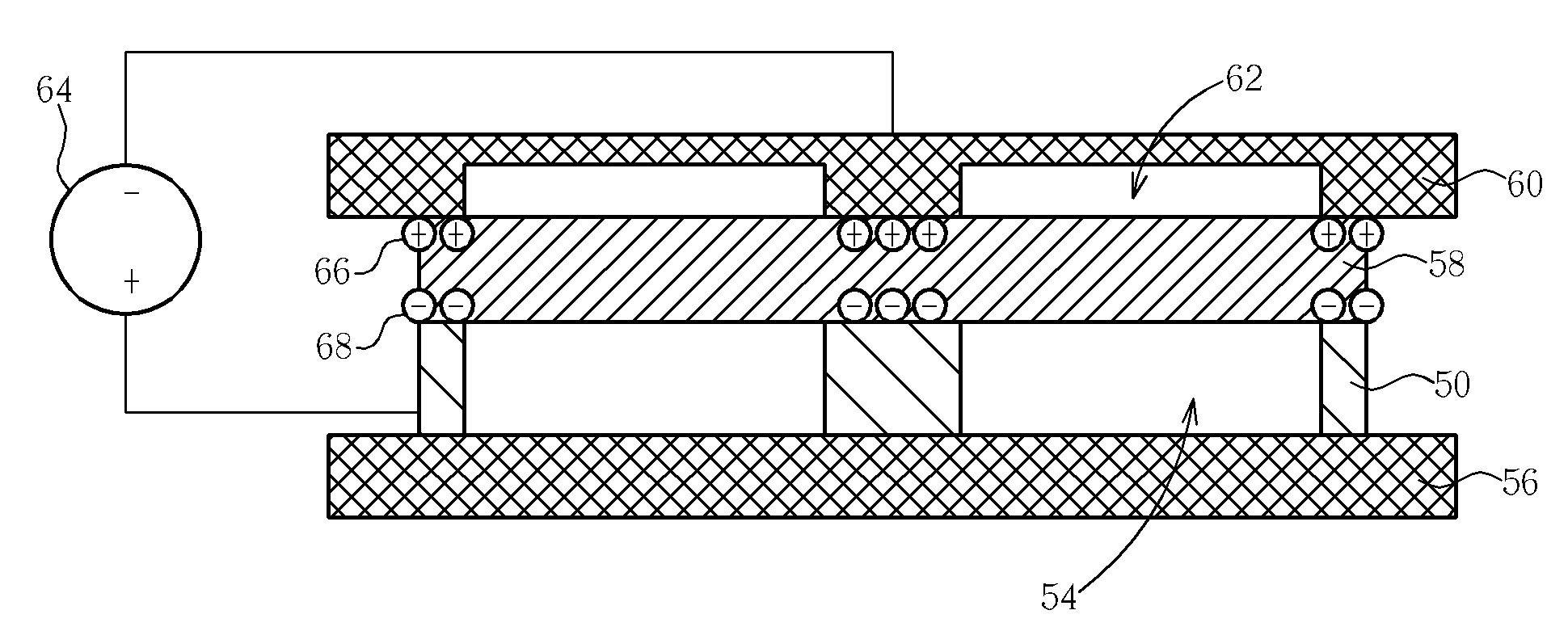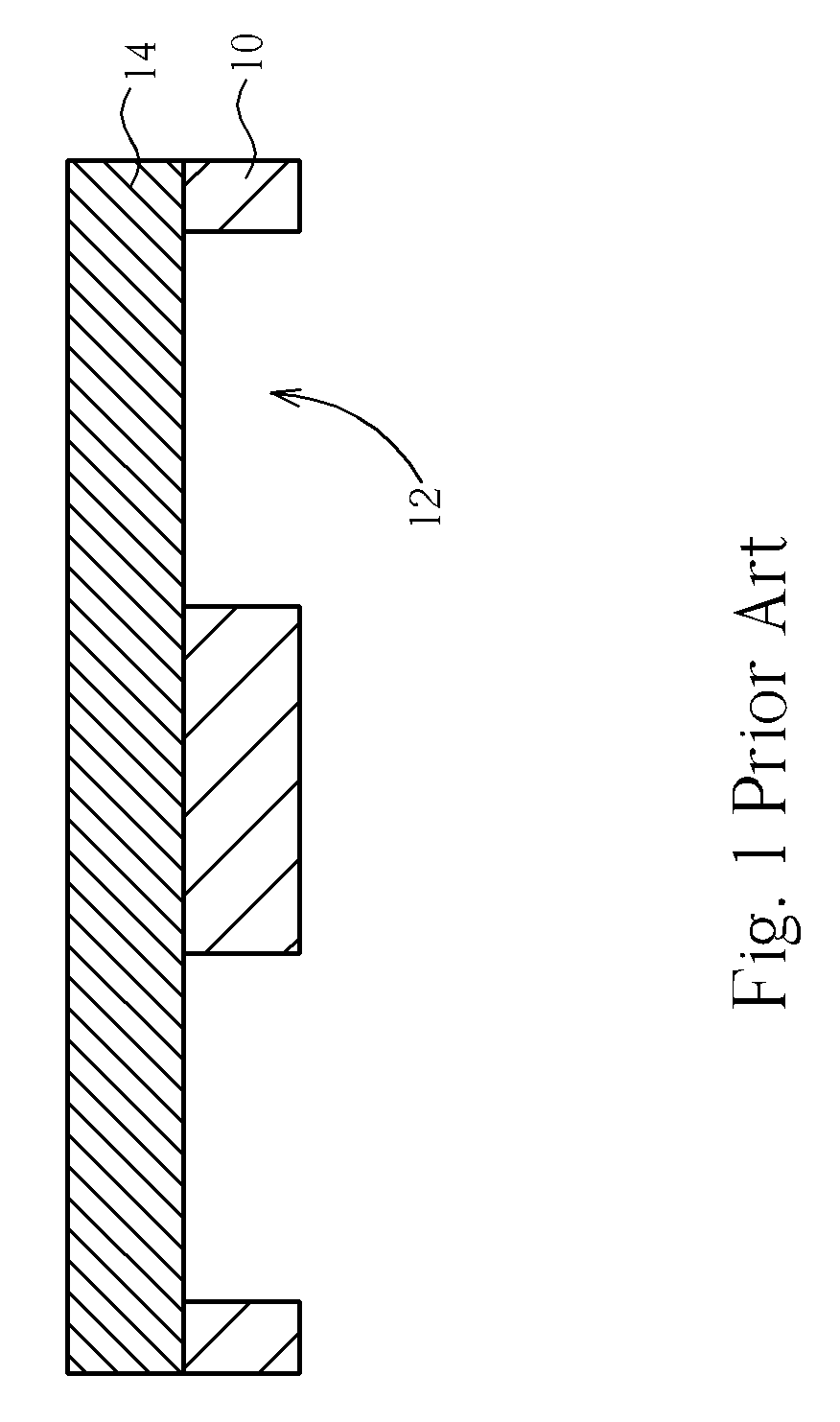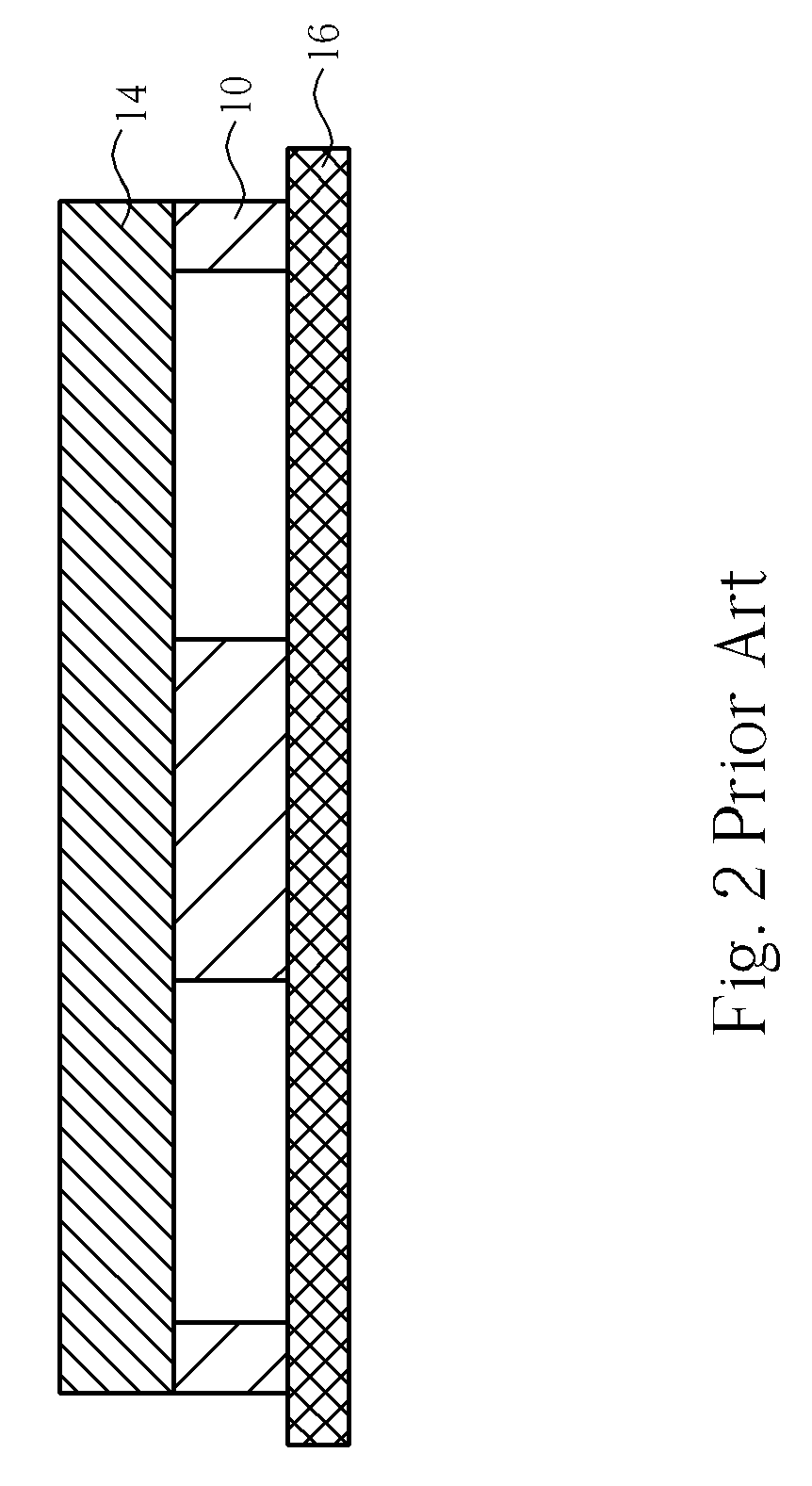Method of fabricating optical device caps
a technology of optical devices and optical caps, applied in semiconductor devices, semiconductor/solid-state device details, electrical apparatus, etc., can solve the problem that optical device caps cannot have good penetrability, and achieve the effect of no contamination, high penetrability, and good penetrability
- Summary
- Abstract
- Description
- Claims
- Application Information
AI Technical Summary
Benefits of technology
Problems solved by technology
Method used
Image
Examples
Embodiment Construction
[0015]Please refer to FIG. 5 through FIG. 11. FIG. 5 through FIG. 11 are schematic diagrams illustrating a method of fabricating optical device caps. As shown in FIG. 5, a wafer 50, such as a silicon wafer, is provided, and then, a thinning process is performed to thin the wafer 50 to a required thickness. The thinning process includes a grinding process, a chemical mechanical polishing process, a plasma thinning process or a combination thereof. As shown in FIG. 6, a lithographic process forms a photoresist pattern 52, and then, regarding the photoresist pattern 52 as a mask, an etching process is performed to etch through a part of the wafer 50 not covered by the photoresist pattern 52 so that a plurality of through holes 54 is formed in the wafer 50. The etching process can be a dry etching process, such as a deep reactive ion etching (DRIE) process. As shown in FIG. 7, the photoresist pattern 52 is subsequently removed, and then, a clean process is performed.
[0016]As shown in FI...
PUM
 Login to View More
Login to View More Abstract
Description
Claims
Application Information
 Login to View More
Login to View More - R&D
- Intellectual Property
- Life Sciences
- Materials
- Tech Scout
- Unparalleled Data Quality
- Higher Quality Content
- 60% Fewer Hallucinations
Browse by: Latest US Patents, China's latest patents, Technical Efficacy Thesaurus, Application Domain, Technology Topic, Popular Technical Reports.
© 2025 PatSnap. All rights reserved.Legal|Privacy policy|Modern Slavery Act Transparency Statement|Sitemap|About US| Contact US: help@patsnap.com



